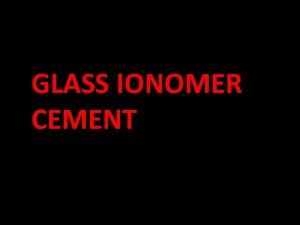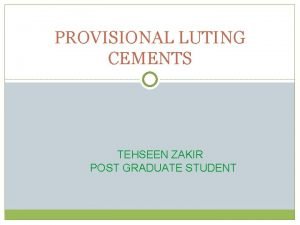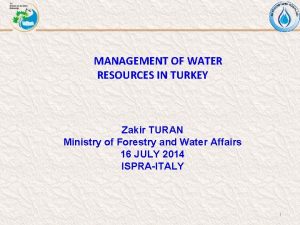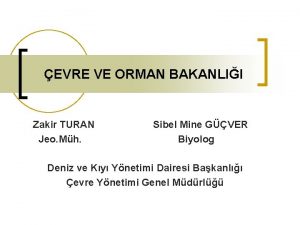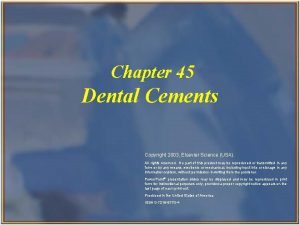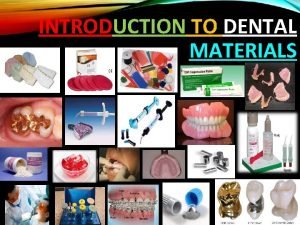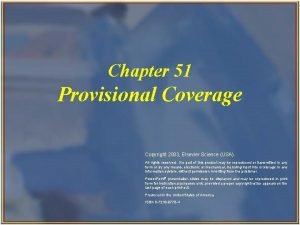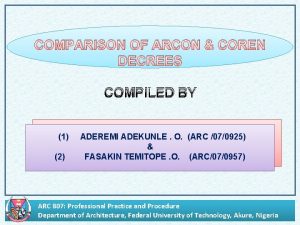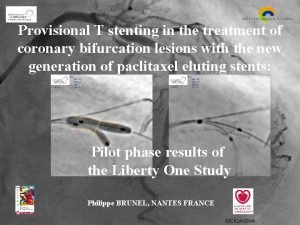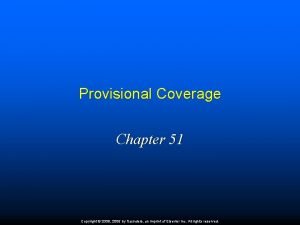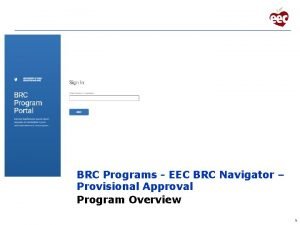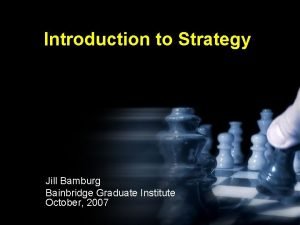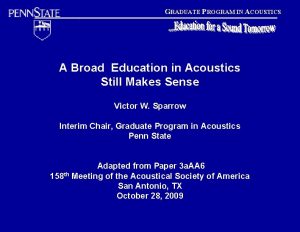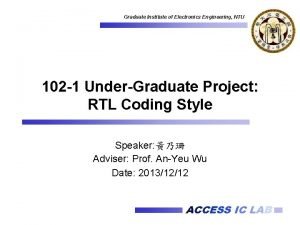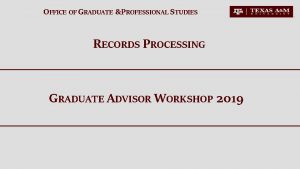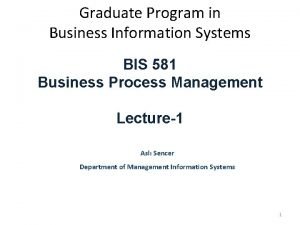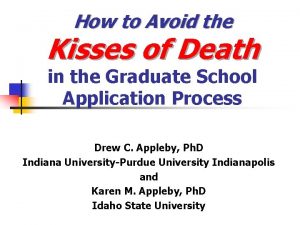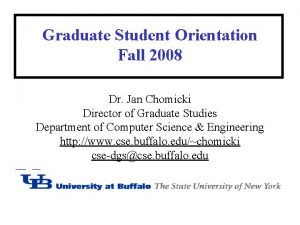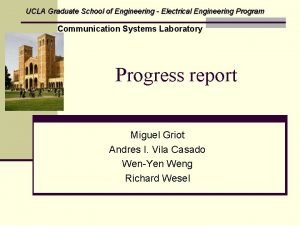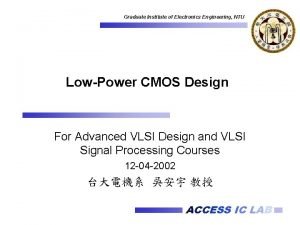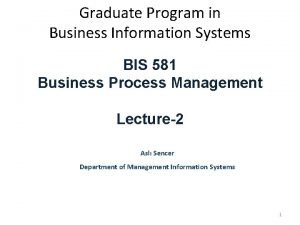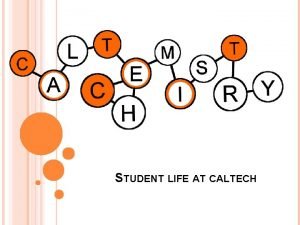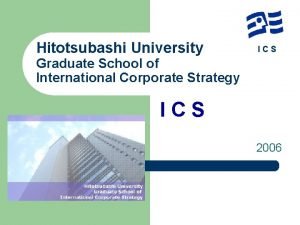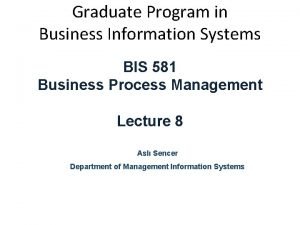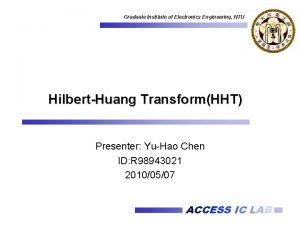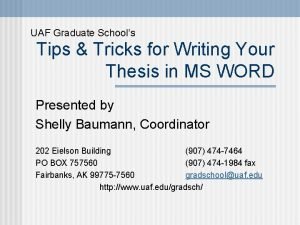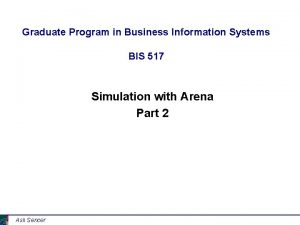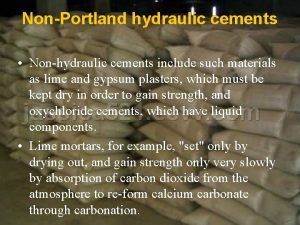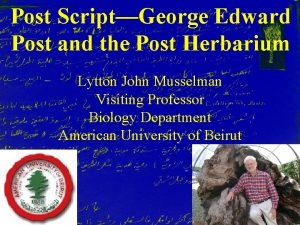PROVISIONAL LUTING CEMENTS TEHSEEN ZAKIR POST GRADUATE STUDENT






































































































- Slides: 102

PROVISIONAL LUTING CEMENTS TEHSEEN ZAKIR POST GRADUATE STUDENT

CONTENTS Introduction Definitions Classification of cements Ideal requirements of cements Basic concepts Zinc oxide Eugenol cement Modified/Reinforced zinc oxide eugenol cement

Zinc Polycarboxylate cement Polymer based cements Recent advances Summary Conclusion

INTRODUCTION Numerous dental treatments necessitate attachment of indirect restorations and appliances to the teeth by means of cement. These include metal, resin, metal-ceramic, and ceramic restorations; provisional or interim restorations; laminate veneers for anterior teeth; orthodontic appliances; and pins and posts used for retention of restorations.

The term cement has been applied to powder / liquid materials which are mixed to a paste consistency. The word ‘luting’ is derived from a latin word Lutum- which means mud.

Dental luting agents provide a link between the restoration and prepared tooth, bonding them together through some form of surface attachment, which may be mechanical, micro-mechanical, chemical or combination. Luting agents may be definitive or provisional depending on their physical properties and planned longevity of the restoration.

DEFINITIONS LUTING is defined as the use of a moldable substance to seal joints and cement two substances together. LUTING AGENT (Anusavice) is defined as a viscous material placed between tooth structure and a prosthesis that hardens through chemical reactions to firmly attach the prosthesis to the tooth structure.

ISO STANDARDS, SUBCOMMITEES (SC) & WORKING GROUPS (WG) have assigned TC 106/SC 1/WG 10 to the Dental Luting Cements. American Dental National Standards Association(ANSI/ADA) Institute/American have assigned Specification No. 96 for water-based cements. http: //www. ada. org/en/science-research/dental-standards/dental-products/products-standards-technicalspecifications-and-technical-reports the

TC 106/SC 1: Filling and Restorative Materials. The following 10 working groups are included: - WG 1 -Zinc oxide-eugenol cements and noneugenol - WG 2 Endodontic materials; - WG 5 - Pit and fissure sealants; - WG 7 - Amalgam/mercury; - WG 9 - Resin-based filling materials; - WGl. O-Dental luting cements, bases, and liners; - WGll- Adhesion test methods; - WG 12 - Resin-based cements; - WG 13 Orthodontic products; - WG 14 - 0 rthodontic elastics. cements;

Ideal requirements of luting cements (Rosentiel and colleagues) Biocompatible Prevent caries or plaque Resistant to microleakage Have sufficient strength to resist functional forces over the lifetime of the restoration Have low water solubility and no water sorption Be adhesive Radiopaque Contemporary fixed Prosthodontics. 5 th edition. Rosensteil, Land, Fujimoto

Esthetic Easy to manipulate Low in cost Have low viscosity at mixing Contemporary fixed Prosthodontics. 5 th edition. Rosensteil, Land, Fujimoto

Qualities desirable for provisional cements Easy to dispense, mix & apply Good retention of the indirect restoration Easy removal of excess from the external surfaces of the restoration after cementation Adequate working & setting time Optimal viscosity & handling properties for ease of application Easy removal of the indirect restoration from the preparation after cementation Esthetic Dentistry: A clinical approach to techniques & materials. 3 rd edition. Kenneth WA

Easy removal of the provisional cement from the tooth preparation, including dentin & enamel. Easy removal of the provisional cement from the internal surfaces of the indirect restoration No or minimal reaction to the restorative material Biocompatibility to soft tissues, pulp & tooth structure Noninterference with adhesion of a definitive cement Good shelf life Esthetic Dentistry: A clinical approach to techniques & materials. 3 rd edition. Kenneth WA

Classification Craig’s classification Functions Cements Final cementation of completed restorations - Zinc phosphate - Zinc silicophosphate - Reinforced zinc oxide eugenol - Zinc polycarboxylate - Glass ionomer cement Temporary cementation of completed restorations or cementation of temporary restorations - Zinc oxide eugenol - Non – Eugenol zinc oxide cement

Cement Principal use Secondary use Zinc phosphate Luting agent for restorations Intermediate restorations Zinc oxide eugenol Temporary & Intermediate restorations luting agent Root canal restorations Zinc polycarboxylate Luting agent Intermediate restorations Zinc silicophosphate Luting agent for restorations Intermediate restorations Glass Ionomer Luting agent for restorations Anterior restorations Resin Luting agent Temporary restorations

O’ Brien’s classification: Based on Matrix bond type Phosphate : Zinc phosphate & Zinc silicophosphate Phenolate : Zinc oxide eugenol, Reinforced zinc oxide & EBA cement Polycarboxylate : Zinc polycarboxylate & Glass ionomer cement Polymethacrylate type : Acrylic cements & BIS – GMA cements

Donovan classification Conventional Zinc phosphate Zinc polycarboxylate Glass ionomer cement Contemporary Resin – modified glass ionomer Resin cement

Based on Ingredients & Applications Water based cements Glass Class & Resin modified glass ionomer cements V restorations Retention of conventional alloy based restorations Retention of alumina or zirconia based all ceramic restorations Retention of orthodontic bands High strength bases Long term provisional restorations Zinc polyacrylate Retention of alloy restorations Retention of orthodontic bands Retention of pediatric stainless steel crowns High strength bases Long term provisional restorations

Zinc phosphate Retention of conventional restorations Retention of orthodontic bands High strength bases Long term provisional restorations Resin based cements Composites Bonded & adhesive resins conventional alloy based restorations Bonded ceramic crowns, bridges, veneers, inlays & onlays Bonded laboratory composite crowns, bridges, veneers, inlays & onlays Bonded posts & cores Retention of provisional restorations Retention of orthodontic bands

Compomers -Bonded conventional alloy based restorations -Retention of alumina or zirconia based all ceramic restorations -Retention of orthodontic brackets -High strength bases Oil based cements Zinc oxide eugenol -High strength bases -Provisional restorations -Root canal sealers -Gingival tissue packs -Surgical dressings

Non eugenol zinc oxide Provisional restorations (especially for teeth that will have bonded permanent restorations) Root canal sealers Gingival tissue packs Surgical dressings

CONCEPTS OF LUTING/ADHESION Adhesion- The property of attraction between unlike molecules Cohesion- The property of attraction between like molecules Adhesive- The material or film used to cause adhesion Adherend- the material to which it is applied

Theory for the phenomenon of Adhesion Four theories have been advanced to account for the observed phenomenon of Adhesion: Mechanical theories: solidified adhesive interlocks micromechanically with the roughness and irregularities of the surface of the adherend Absorption theories: all kinds of chemical bonds between the adhesive and the adherend, including primary (ionic & covalent) & secondary (hydrogen, dipole interaction) valence forces Pickard's Manual of Operative Dentistry - 8 th ed. pd

Diffusion theories: Adhesion is the result of bonding between mobile l molecules. Polymers from each side of an interface can cross over and react with molecules of the other side. Eventually, the interface will disappear and the two parts will become one Electrostatic theories: electrical double layer forms at the interface l contributing to bond strength Pickard's Manual of Operative Dentistry - 8 th ed. pd

The phenomenon of adhesion depends on certain factors, the main factors being: 1. Surface energy 2. Wetting 3. Contact angle

Surface energy / Surface tension For adhesion to exist, the surfaces must be attracted to one another at their interfaces. The energy at the surface of the solid is greater than that of its interior Phillips Science of Dental Materials – Anusavice

Thus the increase in energy per unit area of surface is referred to as the Surface Tension /Surface energy Phillips Science of Dental Materials – Anusavice

Wetting It is difficult to force 2 solid surfaces to adhere Regardless of how smooth they may appear, they are likely to be extremely rough when viewed on a molecular scale Consequently when they are placed in apposition, only “peaks” or “asperities” are in contact Phillips Science of Dental Materials – Anusavice

Because these areas usually constitute only a small percentage of the total surface area, no perceptible adhesion takes place The attraction is generally negligible when the surface molecules of the attracting substances are separated by distances greater than 0. 7 nm Phillips Science of Dental Materials – Anusavice

How to overcome? Use of fluid that flows into these irregularities to provide contact over a greater part of the surface of the solid Eg: when two polished glass plates are placed on top of the other & pressed together, they exhibit little tendency to adhere. However, if a film of water is introduced between them, considerable difficulty is encountered in separating them. To produce adhesion in this manner, the liquid must flow easily over the entire surface & adhere to the solid. This characteristic is known as Wetting Phillips Science of Dental Materials – Anusavice

Contact angle The extent to which an adhesive wets the surface of an adherend may be determined by measuring the contact angle i. e, the angle between the adhesive and the adherend Complete wetting occurs at a contact angle of 0° & no wetting at 180° Phillips Science of Dental Materials – Anusavice

ZINC OXIDE EUGENOL CEMENT These cements have been used extensively in dentistry since 1890. Low strength cements Least irritating of all cements ADA Sp. No. 30 Commercial name Hy- Bond Temporary cement Tempbond-type I Textbook of Operative Dentistry. 3 rd Edn. Nisha Garg, Amit Garg

Classification according to use Type I : For temporary cementation Type II : Permanent cementation Type III : Temporary filling material & thermal insulation Type IV : Cavity liners Textbook of Operative Dentistry. 3 rd Edn. Nisha Garg, Amit Garg

Classification according to composition Unmodified Zn. OE – conventional Modified Zn. OE Fast setting Zn. OE Resin reinforced Zn. OE Polymer EBA reinforced Zn. OE Nonsetting Zn. OE Textbook of Operative Dentistry. 3 rd Edn. Nisha Garg, Amit Garg

Mode of supply Powder Two and liquid paste system Textbook of Operative Dentistry. 3 rd Edn. Nisha Garg, Amit Garg

Composition of Powder Ingredients Function Zinc oxide (69%) Principal constituent White rosin (29. 3%) Reduces brittleness of set cement Zinc stearate (1%) Accelerator, plasticizer Zinc acetate (0. 7%) Accelerator, improves strength Magnesium oxide Added in some powders, it reacts with eugenol in a manner similar to zinc oxide Textbook of Operative Dentistry. 3 rd Edn. Nisha Garg, Amit Garg

Composition of Liquid Ingredients Function Eugenol (85%) Reacts with zinc oxide Olive oil (15%) plasticizer

Modified zinc oxide eugenol cements Fast setting zinc oxide eugenol They contain an accelerator like zinc acetate to decrease the setting time Powder Mixing / Liquid ratio = 3: 1 time – 1 min Setting It time – 5 min has adequate compressive strength – 15 MN/m 2 eg- Zitemp quick set zinc oxide eugenol cement, kalzinol Textbook of dental materials by sharmila hussain.

Resin reinforced zinc oxide eugenol The powder is reinforced with 10 % hydrogenated rosin The liquid contains 90% eugenol & 10% polystyrene Powder Mixing / Liquid ratio – 4: 1 time – 1 min Setting time – 5 mins Compressive strength – 40 MN/m 2 Textbook of Operative Dentistry. 3 rd Edn. Nisha Garg, Amit Garg

Polymer reinforced zinc oxide eugenol cement Powder consists of 80% Zinc oxide & 20% Poly methyl methacrylate Liquid consists of Eugenol, Acetic acid (accelerator) & Thymol (antimicrobial) Textbook of Operative Dentistry. 3 rd Edn. Nisha Garg, Amit Garg

EBA – alumina modified cements (EBA cements) In 1962, Brauer & co-workers showed that addition of EBA to zinc oxide eugenol increases the compressive strength & reduces solubility Powder Zinc consists of: oxide (74%) Alumina Fused (20%) quartz Liquid contains Orthoethoxy benzoic acid (62. 5%) & Eugenol (37. 5%) Textbook of Operative Dentistry. 3 rd Edn. Nisha Garg, Amit Garg

Non setting zinc oxide eugenol cement Zinc oxide is added with additives to increase the setting time & hardness Powder Zinc oxide in 1% propyl paraben – 0. 2 gm Propyl Non contains: paraben – fungicide & bacteriostatic toxic & soluble in eugenol Increases Liquid plasticity of the mix contains Eugenol – 0. 25 ml which reacts with zinc oxide Silicone Sealing grease – 0. 57 gm which has high water repellancy agent (an inert nontoxic filler material) Textbook of dental materials by sharmila hussain

ZINC OXIDE NON EUGENOL CEMENTS Various types of carboxylic acids can be used to replace eugenol and produce a ZOE-like material These products are called Zinc oxide non eugenol cements Commercial names Nogenol, Freegenol Textbook of Operative Dentistry. 3 rd Edn. Nisha Garg, Amit Garg

Setting reaction Hydrolysis of Zn. O to its hydroxide takes place Zn. O + H 2 O Zn(OH) 2 It’s a typical acid – base reaction Zn(OH) 2 + 2 HE Zn. E 2 (Zn Eugenolate) + 2 H 2 O The Chelate formed is an amorphous gel that tends to crystallize imparting strength to the set mass The set cement consists of particles of Zn. O embedded in a matrix of Zn eugenolate Textbook of Operative Dentistry. 3 rd Edn. Nisha Garg, Amit Garg

Setting time – 4 -10 mins Factors affecting setting time: Particle size: smaller Zn. O particle-faster set Accelerators: zinc acetate, zinc propionate, zinc succinate, alcohol, glacial acetic acid & water Heat: cooling glass slab slows reaction, while increased temperature accelerates the reaction Retarders: P/L glycol & glycerine ratio: higher the ratio (more Powder) faster the set Textbook of Operative Dentistry. 3 rd Edn. Nisha Garg, Amit Garg

Manipulation Powder-liquid Measured ratio: 4: 1 to 6: 1 by weight quantity of powder & liquid is dispensed on to a glass slab or paper pad The bulk of the powder is incorporated into the liquid & spatulated thoroughly in a circular motion with a stiff bladed stainless steel spatula Small Oil increments are then added till the mix is complete of orange can be used to clean eugenol cements from instruments Textbook of Operative Dentistry. 3 rd Edn. Nisha Garg, Amit Garg

Two- paste system Equal length of each paste is dispensed & mixed until a uniform color is observed EBA-Alumina modified cements: After dispensing, the powder is incorporated into the liquid in bulk. Mixed with circular motion for 30 seconds, & then broad strokes for an additional 60 seconds till a creamy consistency is obtained Setting time – 9. 5 mins Textbook of Operative Dentistry. 3 rd Edn. Nisha Garg, Amit Garg


Polymer reinforced cements The powder is mixed into the liquid in small portions which is stropped into the previous increment until the desired consistency is obtained Setting time – 6 -10 mins Textbook of Operative Dentistry. 3 rd Edn. Nisha Garg, Amit Garg

Properties the cement strength temporary Compressive They Cements Strength are restoration relatively isintended influenced strength weak &for by: cementation cements temporary & cavity purposes lining like Typeratio: EBA Polymer Particle P/L Alumina I: ranges size reinforced more –modifed smaller from by the. EBA cement: ratio, 6 cements: the to Alumina 28 stronger particle 48 MPa 55 & (24 hr) polymers size, MPa the cement stronger increases the Reinforcement

Tensile strength Varies Ranges according to intended use from 0. 32 to 5. 8 MPa EBA-Alumina: Polymer 4. 1 MPa reinforced: 4. 1 MPa Modulus of elasticity Ranges from 0. 22 to 5. 4 GPa EBA-Alumina: Polymer 5. 0 GPa reinforced: 2. 5 GPA Textbook of Operative Dentistry. 3 rd Edn. Nisha Garg, Amit Garg

Solubility & disintegration Important Type for cements used for permanent cementation I: 1. 5 wt percent Solubility of EBA-Alumina: 1 wt percent Solubility of Polymer reinforced: 1 wt percent Solubility of set cement is high In the presence of water, a reversal of the original setting reaction takes place, that is hydrolysis of zinc eugenolate leads to leaching of eugenol Textbook of Operative Dentistry. 3 rd Edn. Nisha Garg, Amit Garg

Therefore, zinc oxide eugenol tends to disintegrate after a period of time Due to slow release of eugenol, it should never be used with polymeric filling materials. Eugenol causes discoloration of silicate cement & retards polymerization of polymeric fillings Textbook of Operative Dentistry. 3 rd Edn. Nisha Garg, Amit Garg

Film thickness Type I: 25 µm EBA-Alumina: Polymer 25 µm reinforced: 32 µm Biological properties Least p. H: irritating of all dental cements 6 to 8. 0 Bacteriostatic Obtundant property: they have a soothing effect on the pulp in deep cavities, reducing inflammtion & pain Excellent thermal insulating property Textbook of Operative Dentistry. 3 rd Edn. Nisha Garg, Amit Garg

Type III cement seals the cavity surprisingly well against the ingress of oral fluids at least for a short time, hence irritation caused by micro leakage is minimized. Type I - an excellent application for these cements is for short term or intermediate-term luting of provisional acrylic crowns and fixed partial dentures. Textbook of Operative Dentistry. 3 rd Edn. Nisha Garg, Amit Garg

Advantages A wide variety of use Sedative Easily to the pulp manipulated Disadvantages Low strength High solubility unable use under composite restorations Textbook of Operative Dentistry. 3 rd Edn. Nisha Garg, Amit Garg

Evaluation of marginal microleakage of three zinc-oxide-based noneugenol temporary luting agents: An in vitro study Subhash Bandgar, SJ Nagda PURPOSE: To evaluate the marginal microleakage of three zinc-oxide-based non-eugenol temporary luting agents using temporary crowns on prepared natural teeth. METHODS: Freshly extracted 90 maxillary premolars of approximately similar crown height (7. 8 mm-8. 3 mm) were embedded in cold-cure resin blocks. Standard tooth reduction for ceramometal restorations with shoulder margin was planned using a customized handpiece-holding jig. Bandgar S, Nagda SJ. Evaluation of marginal microleakage of three zinc-oxidebased non-eugenol temporary luting agents: An in vitro study. The Journal of Indian Prosthodontic Society 2007; 7: 132 -36

• Temporary crowns were prepared using the putty index technique following the tooth preparation. Specimens ware randomly divided into three groups of 30 each and temporary crowns were cemented using Tempo. SIL (Coltene/Whaledent AG), Rely. XTemp. NE (3 M ESPE AG), Freegenol (GC). RESULTS: Marginal microleakage was highly significant in all the three cements and occurred between the tooth surface and the cement layer and not between the cement layer and the restoration. The authors concluded that Minimum marginal microleakage was obtained with the application of Temposil. Rely. XTemp. NE had the highest marginal microleakage and Freegenol showed intermediate values. Bandgar S, Nagda SJ. Evaluation of marginal microleakage of three zinc-oxidebased non-eugenol temporary luting agents: An in vitro study. The Journal of Indian Prosthodontic Society 2007; 7: 132 -36

Schwartz R et al (1990) conducted a study to determine if a eugenol based temporary cement affected the bond strength of a dual-cure cement to etched enamel. Dicor buttons were cemented to etched enamel surfaces after pretreatment with a non-eugenol containing cement, a eugenol containing cement and a control. This study concluded that shear bond strengths were unaffected by the temporary cement, provided the enamel surface was cleaned with pumice and etched with 37% phosphoric acid Schwarz R, Davis R, Mayhew R. Effect of a ZOE temporary cement on the bond strength of a resin luting cement Am J Dent 1990 Feb; 3(1): 28 - 30

Zinc polycarboxylate temporary cement In the quest for an adhesive luting agent that can bond strongly to tooth structure zinc polycarboxylate was introduced by Smith in 1968, the first cement system that developed an adhesive bond to the tooth structure. ADA Sp. No. 61 It was developed to combine the strength properties of phosphate system and biologic acceptability of Zn. OE cement. Textbook of Operative Dentistry. 3 rd Edn. Nisha Garg, Amit Garg

APPLICATIONS -long term temporary cementation of cast alloys restorations, long term cementation of orthobands -provisional restorative materials eg: -CLING 2, HY- BOND MODE OF SUPPLY -Powder & liquid in bottles -Water settable cements -As precapsulated P/L system. Eg: Duralon Textbook of Operative Dentistry. 3 rd Edn. Nisha Garg, Amit Garg

Composition of Powder Ingredients Function Zinc oxide Principal constituent Magnesium oxide Principal modifier Stannous fluoride Increases strength, modifies setting time, enhances manipulative properties Other oxides (like Bismuth & Aluminium) Radioopacity Textbook of Operative Dentistry. 3 rd Edn. Nisha Garg, Amit Garg

Composition of Liquid is an aqueous solution of 32 to 43% polyacrylic acid Liquid has tendency to become viscous because it is a partially polymerized polyacrylic acid Even though it is quite viscous after mixing, it can attain a satisfactory film thickness because of pseudoplasticity & decrease in viscosity when sheared th Phillips science of dental materials, 11 edition, anusavice

Water Settable Cements -In these cements, the polyacid is freeze dried & added to the cement powder -Water is used as the liquid -When the powder is mixed with water the polyacrylic acid goes into the solution and the reaction proceeds as described for the conventional cements th Phillips science of dental materials, 11 edition, anusavice

Setting reaction This involves particle surface dissolution by the acid that releases zinc, magnesium & tin ions, which bind to the polymer chains via the carboxyl groups These ions react with carboxyl groups of adjacent polyacid chains so that a cross linked salt is formed as the cement sets The set cement consists of an amorphous gel matrix in which unreacted particles are dispersed th Phillips science of dental materials, 11 edition, anusavice

Setting time : 7 -9 min (increased by cooling the glass slab) Mechanical Properties Compressive strength – 55 -67 Mpa Tensile strength – 6. 2 Mpa Elastic modulus - 2. 4 - 4. 4 Gpa Textbook of Operative Dentistry. 3 rd Edn. Nisha Garg, Amit Garg

From Rosenstiel SF, et al: Dental luting agents: a review of the current literature. J Prosthet Dent 80: 280, 1998. )

Solubility & disintegration It is low, but when it is exposed to organic acids of p. H less than 4. 5, the solubility increases Biological Considerations p. H-1. 7, however the liquid is rapidly neutralized by the powder, thus produces minimal irritation to the pulp Also, it is possible that the larger size of the polyacrylic acid molecule limit its diffusion through the dentinal tubules. Textbook of Operative Dentistry. 3 rd Edn. Nisha Garg, Amit Garg

Its biocompatible property is a major factor in the popularity of this cement system. In this regard it is equivalent to ZOE Post operative sensitivity effects are negligible for both the cements Reparative dentin under this cement is more evident Textbook of Operative Dentistry. 3 rd Edn. Nisha Garg, Amit Garg

BONDING TO TOOTH STRUCTURE Outstanding characteristic of bonding chemically to the tooth structure The poly acrylic acid is believed to react with Ca ions via carboxyl groups on the surface of enamel or dentin Thus bond strength to enamel is greater than that to dentin Factors affecting the Bond Strength Clean inner surface of the metal crown. Textbook of Operative Dentistry. 3 rd Edn. Nisha Garg, Amit Garg

Saliva-reduces Adhesion Does is better to a smooth surface than to rough surface not adhere to gold Adhesion to stainless steel is excellent, hence used in orthodontics Textbook of Operative Dentistry. 3 rd Edn. Nisha Garg, Amit Garg

MANIPULATION -The tooth structure should be meticulously cleaned for proper bonding -10%polyacrylic acid solution followed by rinsing with water or 1 -3 % hydrogen peroxide is used -Then dry & isolate -P/L ratio: 1. 5 parts of powder to 1 part of liquid by wt Textbook of Operative Dentistry. 3 rd Edn. Nisha Garg, Amit Garg


The powder and liquid are taken on a cooled glass slab(4°C) liquid is dispensed just prior to mixing, otherwise its viscosity increases The powder is incorporated into the liquid in bulk with a stiff cement spatula & remaining powder is added to adjust consistency The mix appears quite thick but this cement will flow readily into a thin film when seated under pressure Mixing time – 30 - 40 sec Textbook of Operative Dentistry. 3 rd Edn. Nisha Garg, Amit Garg

Points to Note: The cement should be used while the surface is still glossy. Loss of luster indicates that the setting reaction has progressed to an extent that proper wetting of the tooth surface by the mix is no longer possible If the surface is not creamy &shiny & is matured and tends to form cobwebs, the mix should be discarded After insertion the excess is not removed immediately as it passes through a rubbery stage it tends to get lifted from the cavity Remove The excess only when it has hardened powder may be cooled but the liquid should not since the viscosity of the liquid increases Textbook of Operative Dentistry. 3 rd Edn. Nisha Garg, Amit Garg

Advantages of Polycarboxylate Cement -Biocompatibility with the pulp is excellent. - Postoperative sensitivity is negligible when used as a luting agent -Adhesion to tooth -Less expensive Textbook of Operative Dentistry. 3 rd Edn. Nisha Garg, Amit Garg

Disadvantages -Need for accurate proportioning required for optimal properties -Shorter working time (2. 5 min only) -Low compressive strength -More critical manipulation. -it can deform under loading Textbook of Operative Dentistry. 3 rd Edn. Nisha Garg, Amit Garg

Kanakuri et al (2005) evaluated the influence of polycarboxylate temporary cement remaining on the dentin surface on the bond strength of a composite luting system An acrylic resin plate was luted to bovine dentin with a polycarboxylate temporary cement (HY-Bond Temporary Cement Hard, HYB). The temporary cement was not used for the control groups After removing the temporary cement with an excavator, dentin specimens were divided into five groups; 1) no subsequent treatment, 2) cleaning with a rotational brush (RTB), 3) cleaning with a rotational brush and nonfluoridated flour of pumice, 4) sweeping with an air scaler, and 5) treated with a sonic toothbrush Kanakuri K, Kawamoto Y, Matsumura H. Influence of temporary cement remnant and surface cleaning method on bond strength to dentin of a composite luting system. Journal of Oral Science 2005; 47: 9 -13

A silane-treated ceramic disk (IPS Empress) was bonded to each dentin specimen with a composite luting system (Panavia F). Shear testing results showed that the RTB groups exhibited the highest bond strength regardless of the use of temporary cement (P < 0. 05). The use of a rotational brush with water coolant is recommended to achieve ideal bond strength between the Panavia F luting system and dentin to which HYB temporary cement was primarily applied Kanakuri K, Kawamoto Y, Matsumura H. Influence of temporary cement remnant and surface cleaning method on bond strength to dentin of a composite luting system. Journal of Oral Science 2005; 47: 9 -13

An in vitro comparison of marginal microleakage of four groups of temporary cements in provisional crowns Dr. Ra’fat I. Farah, Dr. Moustafa Elzeky Purpose: The aim of this in vitro study was to compare the marginal microleakage in provisional crowns cemented on extracted human premolars using four temporary cements formulated using different chemical bases (zinc oxide eugenol, zinc polycarboxylate, resin, and additional-silicone). Farah RI, Elzeky M. An in vitro comparison of marginal microleakage of four groups of temporary cements in provisional crowns. International Journal of Advanced Research 2015; 3: 778 -87

Conclusion: The results of this study demonstrated that the temporary cementing agents exhibited different sealing abilities. Resin based temporary cement (Ultra. Temp® REZ) and additional -silicone based cement (Tempo. Sil® 2) exhibited the most favorable sealing properties against dye penetration compared with polycarboxylate based cement (Ultra. Temp®) and conventional zinc oxide eugenol cement (Temp. Bond®). Farah RI, Elzeky M. An in vitro comparison of marginal microleakage of four groups of temporary cements in provisional crowns. International Journal of Advanced Research 2015; 3: 778 -87

Temporary Resin Cements They are useful for cementation of interim restorations in the esthetic zone of the mouth, because they are tooth colored and fairly translucent They are easy to clean, and some release fluoride Resin cementation of provisional restorations is useful when the final cement will also be resin because there is no eugenol present to potentially impair polymerization of the final cement Craig’s Restorative Dental Materials. 13 th Edn. Sakaguchi, Powers

-Materials based on methyl methacrylate -Materials based on aromatic dimethacrylate of bis- GMA type Resin cements Applications- used for cementation of restorations, facings and provisional crowns. eg- Systemp Link, Temp-Bond clear, Im. Prov, Sensi. Temp th PHILLIPS SCIENCE OF DENTAL MATERIALS, 4 edition, anusavice

Composition -Consists of aromatic dimethacrylate monomers such as BIS-GMA, triethylene glycol dimethacrylate and urethane dimethacrylate with silane treated inorganic fillers. -the fillers are usually silica or glass particles th Phillips science of dental materials 11 edition, anusavice

Polymerisation can be achieved by conventional chemical cure system or by light activation or both, referred to as dual cure systems. l. Chemically cured systemsl supplied as two component system, consisting of either a powder and liquid or two pastes. l-they are mixed on a paper pad for 20 -30 seconds. Removal of the excess cement is best immediately after seating. l-this cement is suitable for all types of prosthesis. th Phillips science of dental materials 11 edition, anusavice

Light curable cements l-they are single component system. l-indicated for cementation of thin ceramic prosthesis and resin based prosthesis. l-time of exposure should not be less than 40 seconds. l-the required time of exposure to the light of polymerisation depends on the intensity of light transmitted through ceramic restorations and the layer of polymeric cement. l th Phillips science of dental materials 11 edition, anusavice

-excess cement should be removed as soon as the prosthesis is seated. l. Dual cure cementsl-supplied as two component system l-chemical activation is slow and provides extended working time until cement is exposed to curing light. l- gains strength over extended period because of chemically activated polymerisation process. l-Removal of cement upon completion of seating. l th Phillips science of dental materials 11 edition, anusavice

MANIPULATION -Resin cements are often designed for specific applications rather than general uses and are formulated to provide the handling characteristics required for particular applications. th Dental materials and their selection, 4 edition, William O'Brien

Properties -They are stronger and less soluble than other types of cements. - Low rigidity and viscoelastic properties -No bond to tooth structure in the presence of moisture, it permits marginal microleakage. -They show better bonding than other cements to resin facings. th Dental materials and their selection, 4 edition, William O'Brien

Biologic effect -Marked pulpal reaction -Inclusion of potassium nitrate helps reduce post operative sensitivity Advantages - More esthetic and easy to clean up -compatible with temporary resin, resin core buildup, permanant cements and bonding materials - Decreased solubility https www. dentalaegis. com Temporary-Cements

• Disadvantages- deleterious effect on pulp -These cements can absorb odors and discolor, and microleakage may occur, especially with constructed temporary crown. th Dental materials and their selection, 4 edition, William a poorly

CEMENTS USED FOR TEMPORARY LUTING OF IMPLANT RETAINED PROSTHESIS • The disadvantage of transitional cements on natural teeth is the risk of cement failure and decay as a consequence. • As implants do not decay, a temporary cement often maybe used as a definitive cement and permit an easy retrieval of the prosthesis if intermediate or long term complications develop. • The most common soft access cement used is zinc oxide eugenol with EBA. • This cement is inappropriate when cantilever or significant offset loads are present. Dental implant prosthetics, carl E. Misch, 2 nd edition

• The cements used in implant dentistry for final prosthesis include zinc oxide eugenol with or without EBA, polycarboxylate, zinc phosphate and composite resin cements. Dental implant prosthetics, carl E. Misch, 2 nd edition

Temporary cements used in veneers • • • Zinc oxyphosphate Clear temp LC Resin based. Temp Bond clear with triclosan Temporary eugenol free cement Spot etching with dual curing luting cements -A spot with average diameter of 2. 5 mm was etched for 30 s, with 37 % phosphoric acid gel and rinsed for 10 s and blot dried to keep away moisture.

• A dimple is created opposite to the etched spot in the veneer provisional restoration. The desired amount of the cement is dispensed on to the prepared provisionals, and loaded in place. Excess cement is removed from gingival margin with a blunt instrument and only the gingival margin is light cured to tack the provisional restoration in place • Polyurethane adhesive combined with dual curing luting cement

Recent advances Temporary luting agents consisting of PEMA and eugenol -properties are similar to contemporary luting agents in terms of setting time, consistency, water uptake and film thickness. - it also has increased bond strength and lesser residue ratio than commercial luting agents. Okada H, Ishida Y, Noguchi H, Ryukata I, Nagayama K. Development of a new temporary luting agent consisting of PEMA and eugenol — Residue ratio and bond strength of luting cements for abutment materials. Dental Materials

Tempo. SIL -It consists of zinc oxide with polymethylsiloxane. -It shows decreased marginal microleakage. -As silicone is a major constituent of this, it adds to the resiliency of this material and its ability to withstand thermal stresses.

Clear temp lcl-composite resin in composition l-its unique flourescence property causes it to glow under black light for easy detection. l-ideal for temporary anterior veneers. l. Ultra templ-non eugenol polycarboxylate cement l-temporary cementation of provisional crowns, bridges, inlays and onlays. l. Ultra temp REZl-non eugenol resin based self cure cement. l-suitable for cases where longer retention is required. l

Nex. Templ-resin based chemically cured cement. l-used for long term and short term temporary crowns. l-the chlorhexidine component acts as antibacterial agent and potassium nitrate desensitizes the pulp. l

Summary While there is no one provisional cement that meets all of the requirements of an ideal temporary cement, the current generation of provisional cements offers a number of advantages over what has been used in the past. Depending on the types of restorations metal-ceramic, all- ceramic and implants, there may be a need for more than one brand of provisional cement.

It may be necessary to have at least two different provisional cements in practice. Of importance with the use of any cement, the provisional cement must be cleaned thoroughly from the tooth before definitive cementation.

Thank you!
 Panavia luting
Panavia luting Types of gic
Types of gic Zinc phosphate cement setting reaction
Zinc phosphate cement setting reaction Zakir turan
Zakir turan Zakir turan
Zakir turan Chapter 45 dental cements
Chapter 45 dental cements Preventive dental materials
Preventive dental materials Devonte is a graduate student in developmental psychology
Devonte is a graduate student in developmental psychology What is the purpose of provisional coverage?
What is the purpose of provisional coverage? Arcon provisional registration
Arcon provisional registration Bccnp provisional license
Bccnp provisional license Inverted provisional stenting
Inverted provisional stenting Duty assessment
Duty assessment Chapter 51 provisional coverage fill in the blank
Chapter 51 provisional coverage fill in the blank Brc program portal
Brc program portal Din status provisional
Din status provisional Https://student.freckle.com/#/fact-practice
Https://student.freckle.com/#/fact-practice National student clearinghouse student tracker
National student clearinghouse student tracker Hello teacher good morning
Hello teacher good morning Class maths student student1 class student string name
Class maths student student1 class student string name Student learning soace
Student learning soace What i did last weekend essay
What i did last weekend essay National student clearinghouse student tracker
National student clearinghouse student tracker What did they do last weekend
What did they do last weekend Uncw mpa
Uncw mpa Tass kourkoulis
Tass kourkoulis Jill bamburg
Jill bamburg Acoustics graduate programs
Acoustics graduate programs Sheffield graduate attributes
Sheffield graduate attributes Usf graduate admissions
Usf graduate admissions Nau edulouie
Nau edulouie G team
G team Graduate institute of electronics engineering
Graduate institute of electronics engineering Ogaps degree plan
Ogaps degree plan 15-780 graduate artificial intelligence
15-780 graduate artificial intelligence Bis graduate program
Bis graduate program Graduate studies fellowship programs (korea foundation)
Graduate studies fellowship programs (korea foundation) Casey fink graduate nurse experience survey
Casey fink graduate nurse experience survey The graduate summary
The graduate summary Gss fast stream
Gss fast stream Jesus seminary
Jesus seminary Manchester graduate attributes table
Manchester graduate attributes table Nathan weiss graduate college
Nathan weiss graduate college Ruth millington
Ruth millington Metu graduate application
Metu graduate application Kisses of death for the graduate school application
Kisses of death for the graduate school application Hamline graduate programs
Hamline graduate programs Lsu graduate school thesis guidelines
Lsu graduate school thesis guidelines Ub cse graduate handbook
Ub cse graduate handbook 15-780 graduate artificial intelligence
15-780 graduate artificial intelligence Ucla ece graduate
Ucla ece graduate Graduate academic affairs iit
Graduate academic affairs iit Trendence graduate barometer
Trendence graduate barometer 吳安宇
吳安宇 Ogs application deadline
Ogs application deadline Bis graduate program
Bis graduate program Nau graduate school
Nau graduate school Siue graduate assistantship
Siue graduate assistantship Navy gev
Navy gev Oussep osaka
Oussep osaka Caltech student life
Caltech student life Ics graduate school
Ics graduate school Editorial office uf
Editorial office uf Graduate success attributes magazine
Graduate success attributes magazine Enterprising skills and qualities
Enterprising skills and qualities Profile of a virginia graduate
Profile of a virginia graduate Rutgers handshake
Rutgers handshake 15-780 graduate artificial intelligence
15-780 graduate artificial intelligence Twente graduate school
Twente graduate school Bis graduate program
Bis graduate program Towson graduate school
Towson graduate school Kupid portal
Kupid portal Time management for graduate students
Time management for graduate students Graduate institute of electronics engineering
Graduate institute of electronics engineering Upm sgs
Upm sgs Ucla graduate school
Ucla graduate school What is trendence research
What is trendence research Sf express graduate trainee
Sf express graduate trainee West point graduate deaths
West point graduate deaths Kappa alpha psi incorporation date
Kappa alpha psi incorporation date Unsw medicine graduate capabilities
Unsw medicine graduate capabilities Graduate institute of electronics engineering
Graduate institute of electronics engineering Uws graduate attributes
Uws graduate attributes George mason university off campus housing
George mason university off campus housing 15-780 graduate artificial intelligence
15-780 graduate artificial intelligence Joseph wibowo hadipoespito
Joseph wibowo hadipoespito Hala tuju tvet
Hala tuju tvet Graduate college jamshedpur
Graduate college jamshedpur Ajou university gsis
Ajou university gsis Video auchan
Video auchan Uaf thesis format
Uaf thesis format New graduate nurse learning objectives
New graduate nurse learning objectives Bis graduate program
Bis graduate program Graduate capital model
Graduate capital model Asean graduate program
Asean graduate program Graduate enrollment marketing
Graduate enrollment marketing Georgia high school requirements
Georgia high school requirements Profile of a virginia graduate
Profile of a virginia graduate Gc cuny portal
Gc cuny portal Graduate institute of electronics engineering
Graduate institute of electronics engineering Pfizer uk graduate scheme
Pfizer uk graduate scheme Fort bend schoology
Fort bend schoology Utrgv graduate college
Utrgv graduate college

